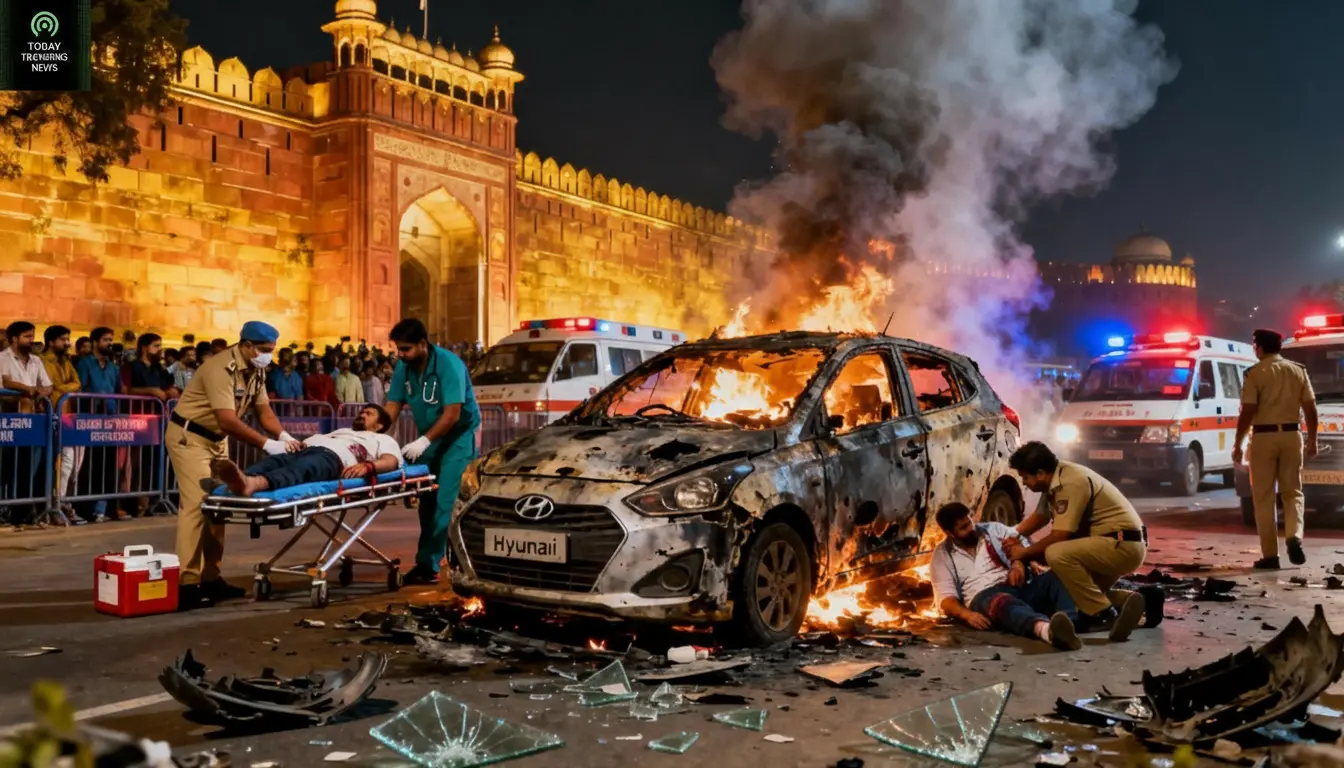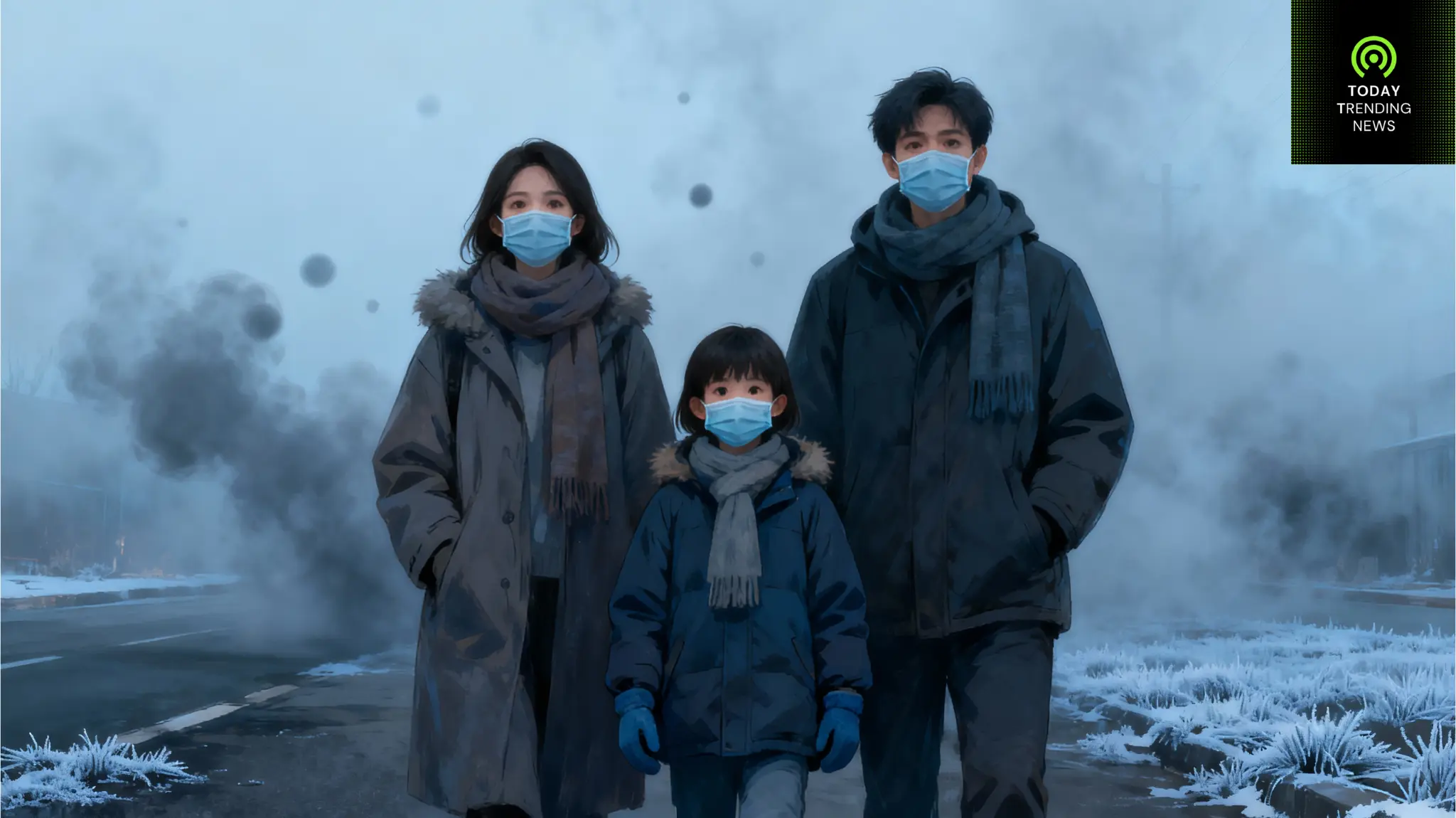On Monday evening, the most terrifying terrorism incident that had ever taken place in recent history was witnessed in India as a Hyundai i20 car went off in the outskirts of the Delhi Red Fort Metro station. The explosion killed at least eight individuals and injured over 20 people jolting the entire city. The government responded swiftly, sending medics and crime investigators to the site as frightened citizens were reeling over events unfolding around one of the most renowned landmarks in India.
The Explosion and the Short-term Perspectives
The explosion was said to have taken place at the time when the evening traffic was escalating according to eyewitnesses. Magenta Metro station also caused the destruction due to overcrowding of commuters and others selling goods at Red Fort Metro station. The wrecked body of the Hyundai i20 was lying in the middle of the rubble in a contorted manner and the security men immediately suspected foul play. The police surrounded the scene and started gathering evidence with local hospitals admitting people with life threatening injuries.
The concept of security is not unfamiliar with Delhi, the city that has been often facing danger at the problematic moments (Delhi coughs and wheezes: Flu cases soar). But the size and timing of this explosion showed that weaknesses are still there even in well-guarded areas.
The Faridabad Connection
Faridabad officials had found and removed an astonishing 2900 kilos of explosives just hours prior to the explosion. Investigators are currently convinced that this cache is at the center of the attack in Delhi, and that a number of stock suspects, including local professionals, have potential terror units acting across state borders.
The timeliness of these findings and fatal explosion revealed weaknesses because the arms network that connected Faridabad and Delhi appeared broad than expected. This event was related to other unexpected disasters that rocked cities this year (Ahmedabad plane crash), and terror analysts emphasized that there are no changes in the routine of daily events that can transform life in a blink of a second.
NIA Steps In
Since the network was being very complex and massive, the National Investigation Agency (NIA) was invited so that it could head the investigation. Their presence was both an indicator of the seriousness of the terrorist threat, and the potential of the presence of sleeper cells or cross-border connections. Studying along with other security agencies, NIA officers soon started interrogating arrested suspects and following forensic leads.
To get the official updates of the investigation, visit the site of the National Investigation Agency (NIA).
To a lot of the Delhiites, NIA work brought to mind some of the other high profile cases as well as the government reactions to crises (US flight cuts, government shutdown). Preparation of central agencies to take over during emergencies is decisive to such confidence of the people and national security.
City Under Security Alert
As the city was already shuddering, officials launched massive security measures. Subway stations, airports, and markets were searched at night because of further threats. Advisories to the citizens encouraged them to be vigilant, unnecessary flocking together of places, and to report any suspected actions.
Quick mobilization of emergency is a common phenomenon in modern India, be it a health disaster or a security catastrophe ( Delhi coughs and wheezes: Flu cases soar ). The pillars of day-to-day life have become city resilience, local preparedness, and community awareness.
The Leadership and Government Response
Prime Minister Narendra Modi and Home Minister Amit Shah appealed to the citizens promising to take decisive measures. Modi honored the victims and urged all to rise and be together and close to Amit Shah assured the citizens that no piece of stone could be left unturned to seek justice. Their words were like a sure hand during a crisis who had been a big leader in the recent cases of emergencies (PM Modi fasts for Lord Ram).
What Citizens Should Do
Authorities advised:
- Keep updating on what has been proven to be true.
- Give full cooperation to the police and investigators.
- Be socially friendly and assist the troubled neighbors.
Conclusion
The Red Fort explosion was a sombre development that reminded of the continued city security concerns. With the agencies in India in the hunt to find out the full scope of the terror plot, the country stands firm but watchful as it knows that strength, readiness and vigilance are the most effective barriers between them and those individuals who want to unleash terror.What is your level of safety in your city? Comment your views below and find out more breaking news and crisis attacks of India.




